Section 4.2
Using Harvest and Cumulative Land Use Effects Simulators to Predict Population Change in Canada Warblers
Research Spotlight
Decision support tools are used to better understand and manage the cumulative effects of human activities on the Canada Warbler in the Al-Pac FMA area.
Acknowledgements
This research was funded jointly by Alberta-Pacific Forest Industries Inc. and the Government of Canada through Mitacs Accelerate grants [numbers IT07731, IT11327], and supported by the Boreal Avian Modelling Project (BAM).
For complete results see: Leston, L. et al. 2020. Projecting bird population responses to harvest plans and cumulative effects of disturbance by linking abundance models to simulators. Frontiers in Ecology and Evolution. Available at: www.frontiersin.org/articles/10.3389/fevo.2020.00252/full.
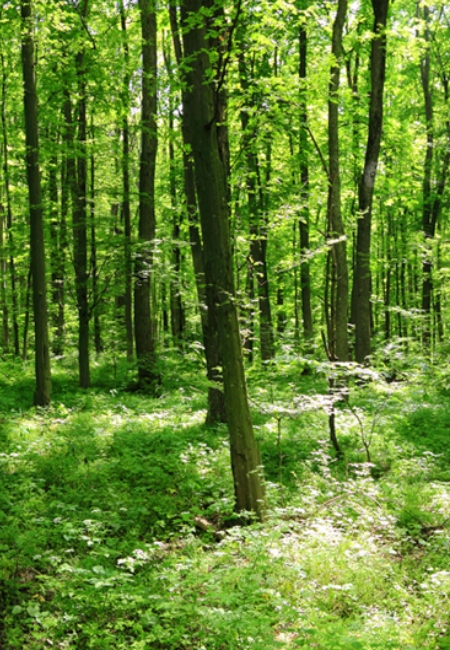
Photo: ABMI
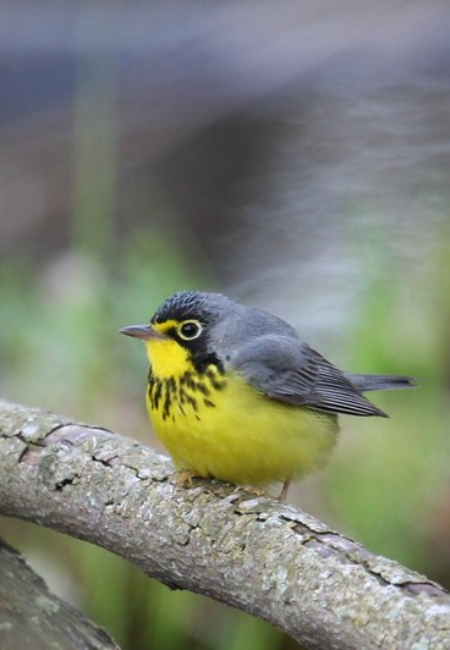
Photo: Ric McArthur
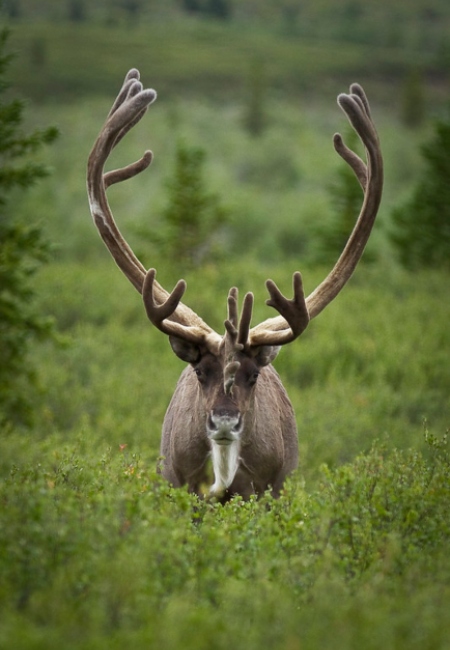
Photo: NPS Jacob W Frank
Introduction
Decision support tools can be used to better understand and manage the cumulative effects of human activities on environmental values in landscapes. This includes protecting species at risk as part of sustainable forest management planning.
One application of decision support tools to support forest management is to improve understanding of potential impacts to one species of concern when managing for the needs of another. Management of forest harvesting to maintain sufficient habitat for Woodland Caribou by deferring logging in caribou range is one example of this[1,2,3]. A caribou-centric harvest strategy has the potential to transfer harvest pressure to other areas that are important habitats for other threatened species. Understanding trade-offs in management decisions for caribou is an important issue in northern Alberta.
A second application of decision support tools to support forest management planning is accounting for cumulative effects of human and natural disturbances, other than forestry activities, on environmental values in the boreal forest. Given uncertainty about development plans for other industrial sectors or future wildfire rates as a result of climate change, tools that simulate and incorporate multiple land uses and natural disturbance can be used predict effects on species at risk under a range of possible futures[4,5].
Two harvest planning and land use simulation tools—Patchworks and ALCES Online—have the potential to facilitate both multi-species conservation planning and planning for multiple disturbances in managed landscapes like the Al-Pac FMA area. To demonstrate their utility for land use planning, Patchworks and ALCES Online were used to assess the sensitivity of Canada Warblers in the Al-Pac FMA area to:
- harvest plans designed to maintain habitat for Woodland Caribou, and
- cumulative effects of forestry, other industrial activities, and natural disturbance.
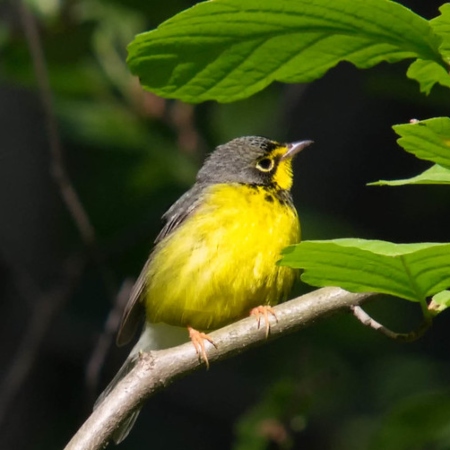
The Canada Warbler is federally and provincially listed as threatened and is one of several old forest bird species that occurs in the Al-Pac FMA area. This species prefers old deciduous and mixedwood forest for breeding in the boreal forest.
Photo: Will Pollard
Research Highlights
Planning Tools: Using Patchworks to identify the Impact of Habitat Management for Woodland Caribou on Canada Warblers
Purpose: To better understand how a caribou-centric harvest strategy could potentially impact Canada Warbler populations in the Al-Pac FMA area, we modelled how Canada Warbler populations were predicted to change over a 50-year time span under two harvest scenarios:
- Scenario 1: Preferred Forest Management (PFM) Scenario - harvesting is deferred within Woodland Caribou ranges (primarily black spruce/larch bogs and fens) for 20 years.
- Scenario 2: Ecosystem-based Management/Natural Disturbance Model (EBM/NDM) Scenario - harvesting approximates the pattern and distribution of fire disturbance, and there is no deferral of harvest within a Woodland Caribou Conservation Zone.
Within each scenario, harvest is the only source of disturbance setting back forest stand age to 0. Given the small area harvested over 50 years, forest age increased (on average) under both scenarios.
Key Findings: Deferring harvest for 20 years within Woodland Caribou range in the Al-Pac FMA area did not significantly reduce habitat for Canada Warblers over 50 years. In fact, harvest deferral was predicted to increase habitat for Canada Warblers. The increase in Canada Warblers is probably due to the increasing average deciduous forest age over 50 years in the simulation, since harvest was assumed to be the only disturbance removing older forests.
Management Implications: Scenario results from Patchworks indicate a caribou-centric harvest strategy does not increase risk to Canada Warbler, and likely other species associated with mature/old deciduous and mixedwood forest. Further, harvest scheduling software like Patchworks, when linked with species abundance models, can be used to project how different strategic harvest plans could affect species numbers in the future.
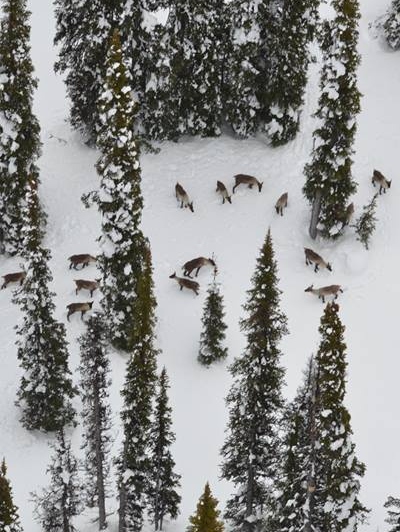
Photo: RCRW
Planning Tools: Using ALCES Online to Quantify Cumulative Impacts of Human Footprint and Natural Disturbance on Canada Warblers
Purpose: In addition to forest harvesting, natural disturbance and energy sector development also affect forest age and the habitat available to different species over time. To project how Canada Warbler populations were affected by cumulative effects of disturbance, we developed five scenarios using the ALCES Online planning tool in which available habitat was affected by forest harvesting, fire, energy development, and seismic line reclamation over a 50-year time span. All scenarios share the same extent and locations of harvest disturbances, and unless otherwise specified, the same burn rate of 284.8 km2/year.
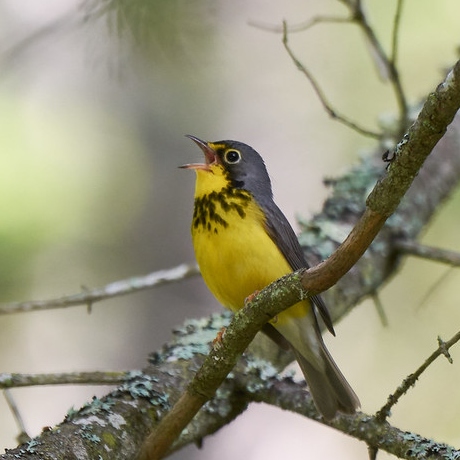
Photo: John Sutton
The five scenarios include:
Scenario 1: “Al-Pac Business as Usual (BAU)” Scenario. Under this scenario, it is assumed that in addition to forestry, some forest habitat is either set back by fire or converted to other land uses such as energy sector development as well as agriculture and urbanization. Specific details include:
- Forest harvesting with 20-year deferral in caribou range,
- Some forest set back by fire at a burn rate of 284.8 km2/year,
- Moderate development of energy sector, settlement, and roads.
- There is no forest regeneration along seismic lines.
Scenario 2: “Seismic Reclamation” Scenario. In this scenario, we assume the same amount and location of fire, harvest, and non-forestry footprint as in the “Al-Pac Business as Usual” scenario, but also assume that seismic lines are successfully reclaimed and start regenerating to forests for Woodland Caribou habitat.
Scenario 3: “No Fire” Scenario. In this scenario, we assume that no future forests are burned, but other variables are the same as in the “Al-Pac Business as Usual” scenario.
Scenario 4: “No Energy” Scenario. The “No Energy” scenario assumes that no new energy sector development occurs, but other variables are the same as in “Al-Pac BAU”.
Scenario 5: “ Increased Fire” Scenario. The “Increased Fire” scenario assumes that twice the area of forest is burned each decade reducing the area of older forests, but other variables are the same as in “Al-Pac BAU”.
Key Findings: When we considered cumulative effects of harvest, fire, and habitat conversion by non-forestry footprint, Canada Warblers were still projected to increase under all five scenarios we tested. But there were differences between scenarios:
- Canada Warblers showed the strongest response to the “No Fire” scenario increasing by 104% followed by the “No Energy” Scenario in which Canada Warblers increased by 77%
- Canada Warbler increased by 50% if seismic lines are restored (“Seismic Line Reclamation” scenario), and 42% in the “Al-Pac Business as Usual” Scenario,
- The smallest predicted increase for Canada Warblers was under the “Increased Fire” scenario (+14%).
Management Implications: We found that fire and future energy sector development in addition to forestry reduced habitat for Canada Warbler—a species associated with old deciduous and mixedwood forests—in the Al-Pac FMA area. Projected increases in fire activity reduces the availability of old forest habitat resulting in detrimental impacts to old forest birds like the Canada Warbler[6]. However, restoring habitat for Woodland Caribou may incidentally have positive effects for Canada Warbler[7,8]. Seismic reclamation is one strategy being explored for improving Woodland Caribou habitat.
Conclusion
Given that the Al-Pac FMA area is being transformed by multiple agents of landscape change, wildlife management decisions must account for all disturbances, not just forestry. In addition, management decisions must also account for the needs of multiple species. Modelling results from Patchworks and ALCES indicate management strategies to improve Woodland Caribou habitat (i.e., deferring harvesting and seismic line restoration) also benefit Canada Warblers. More broadly, the results of this research show that decision support tools can improve understanding of how multiple agents of change can impact species on the landbase, supporting the process of integrated landscape management for wildlife in Alberta.

Photo: Will Pollard
References
Dyer, S.J., J.P. O'Neill, S.M. Wasel, and S. Boutin. 2001. Avoidance of industrial development by woodland caribou. Journal of Wildlife Management 65:531-542.
Dyer, S.J., J.P. O'Neill, S.M. Wasel, and S. Boutin. 2002. Quantifying barrier effects of roads and seismic lines on movements of female woodland caribou in northeastern Alberta. Canadian Journal of Zoology 80:839-845.
Wittmer, H.U., B.N. McLellan, R. Serrouya, and C.D. Apps. 2007. Changes in landscape composition influence the decline of a threatened woodland caribou population. Journal of Animal Ecology 76:568-579.
Carlson, M., B. Stelfox, N. Purves-Smith, J. Straker, S. Berryman, T. Barker, and B. Wilson. 2014. “ALCES Online: Web-delivered scenario analysis to inform sustainable land-use decisions,” in Proceedings of the 7th International Congress on Environmental Modelling and Software. Eds. D.P. Ames, N.W.T. Quinn and A.E. Rizzoli (San Diego, CA: International Environmental Modelling and Software Society), 1-8.
Carlson, M. and B. Stelfox. 2014. “Alberta oil sands development and risk management of Canadian boreal ecosystems,” in Peak Oil, Economic Growth, and Wildlife Conservation. Eds. J.E. Gates, D.L. Trauger, and B. Czech (Springer, New York, New York), 219-244.
Cadieux, P., Y. Boulanger, D. Cyr, A.R. Taylor, D.T. Price, P. Sólymos, D. Stralberg, H. Chen, A. Breka, and J.A. Tremblay. 2020. Projected effects of climate change on boreal bird community accentuated by anthropogenic disturbances in western boreal forest, Canada. Diversity and Distribution doi: 10.1111/ddi.13057.
Bentham, P. and B. Coupal. 2015. Habitat restoration as a key conservation lever for woodland caribou: a review of restoration programs and key learnings from Alberta. Rangifer 35:23-147.
Kansas, J.L., M.L. Charlebois, and H.G. Skatter. 2015. Vegetation recovery on low impact seismic lines in Alberta’s oil sands and visual obstruction of wolves (Canis lupus) and woodland caribou (Rangifer tarandus caribou). Canadian Wildlife Biology and Management 4:137-149.
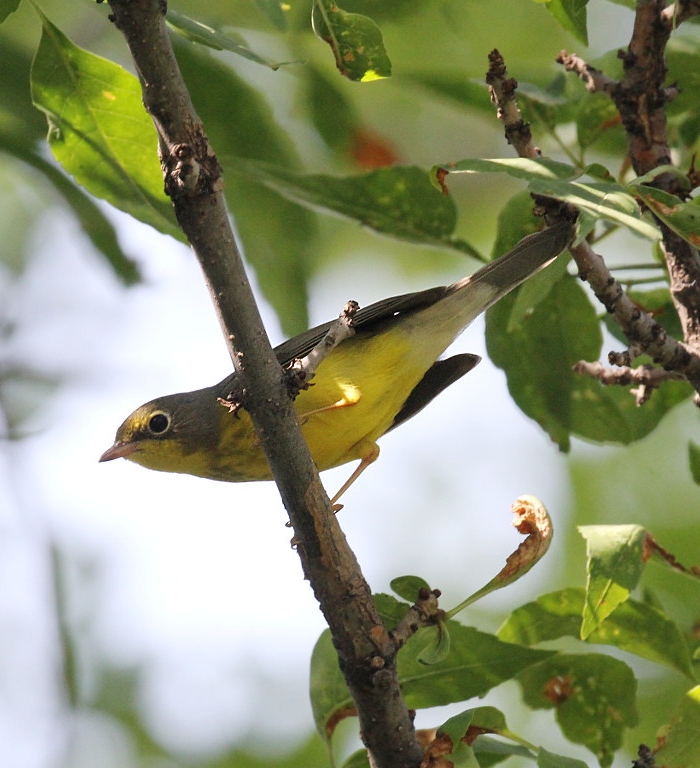
Photo: Vitalii Khustochka





